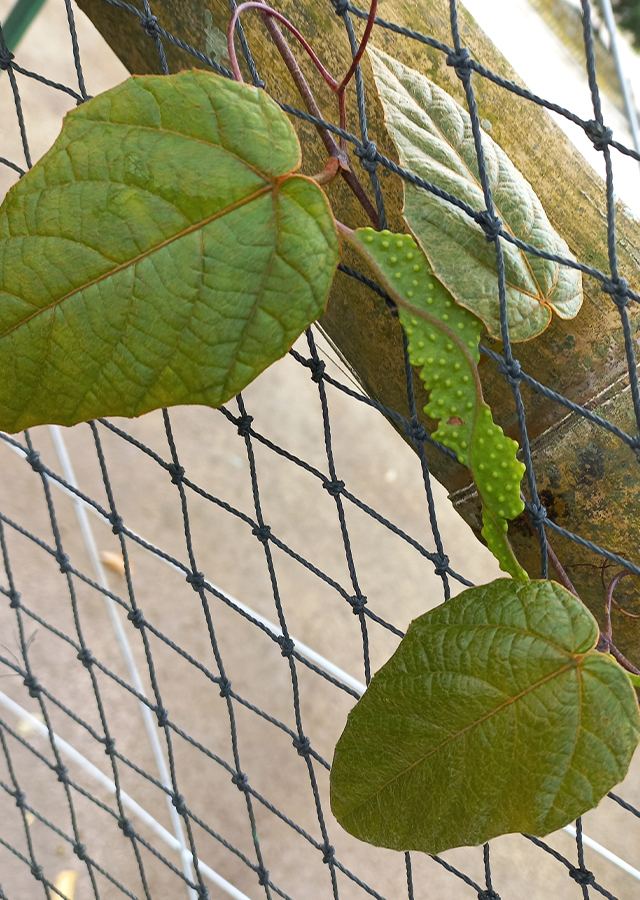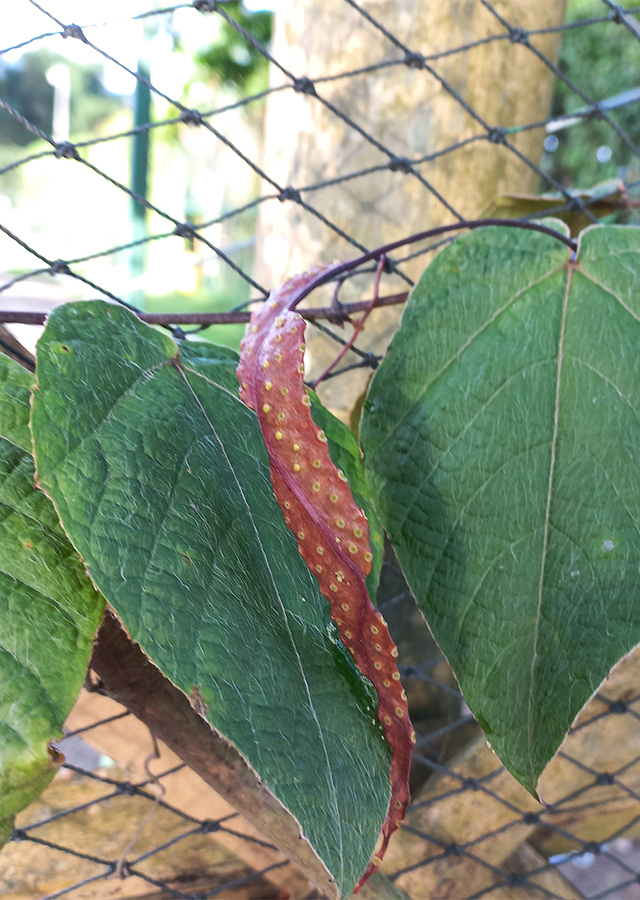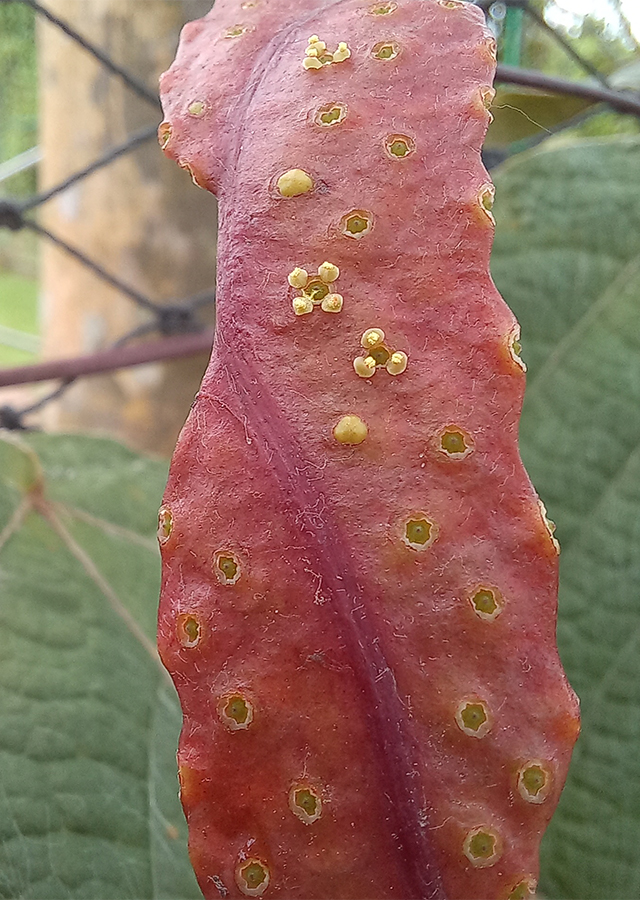Akar Gamat
Pterisanthes cissioides Blume
Vitaceae
Location in our garden
Principal



Synonym
Cissus involucrata Spreng.
Pterisanthes involucrata G. Don
Vitis cissioides (Blume) Backer
Habitus
Climbers. An evergreen herbaceous climber perennial liana.
Part Used
Roots
Twigs
Growing Requirements
Need Shade
Habitat
Forest
Terrestrial
Overview
Pterisanthes cissioides is native to Peninsula Thailand to West Malesia, with its distribution Brunei Darussalam, Indonesia (Java, Kalimantan, Sumatra), Malaysia (Peninsula, Sabah, Sarawak), Myanmar (Peninsula), Philippines (Mindanao), Singapore, Thailand (Ranong, Songkhla, Narathiwat). The species name comes from Greek; pteron, wing; Greek anthe, flower, probably referring to the flat blade-like inflorescence; and Latin cissoides, like Cissus genus, the reference to its appearance that resembles plants from the genus Cissus. This plant is desirable for its ornamental flowers and foliage, and is used in traditional medicine. It is also suitable for parks and gardens, at partially shaded areas.
Vernacular Names
No found data on this. Need further research.
Agroecology
Found in swampy areas and alluvial sites in forests. Grows on the fringe of lowland dipterocarp forests, in moist soils, well-drained soils, fertile loamy soils. It prefers semi-shade light.
Morphology
- Stem - slender, cylindrical, striate, glabrous.
- Leaves - spirally arranged, alternate, petiolate, pinnate venation, green when mature, stalked leaves have 3–5 papery leaflets. The terminal leaflet is long egg-shaped to oval and 10–18 by 4.1–6.9 cm. The lateral leaflet is asymmetric oblong and 9.1–16 by 4–6.7 cm.
- Flowers - bisexual, cluster inflorescence, axillary, corolla petals ovate-triangular, its stalked flowering shoot is brownish-green and 15–39 cm long. It mostly bears stalkless flowers.
- Fruit - simple, fleshy, egg-shaped berries and contain 1–2 seeds each, ripening purplish-pink. The seed is up to 6 by 5 mm.
- Seed - obovate, rugose.
Cultivation
Generatively propagated by seed.
Chemical Constituents
No found data on this. Need further research.
Traditional Medicinal Uses
The roots are rubbed on swellings on legs.
Part Used
Reference Sources
- Asianplant. (No date). Pterisanthes cissioides Blume. https://asianplant.net/Vitaceae/Pterisanthes_cissioides.htm. 10-03-2022.
- Kew Royal Botanic Gardens. (No date). Plants of The World Online: Pterisanthes cissioides Blume. https://powo.science.kew.org/taxon/urn:lsid:ipni.org:names:68412-1. 10-03-2022.
- National Park of Singapore. (No date). Flora & Fauna Web: Pterisanthes cissoides Blume. https://www.nparks.gov.sg/florafaunaweb/flora/5/9/5952. 10-03-2022.
- Trias-Blasi, Anna, et al. (2014). A taxonomic revision of Pterisanthes (Vitaceae) in Thailand and a new Thai record for Pterisanthes cissioid. Phytotaxa 159 (2): 095–104. Available also at: http://dx.doi.org/10.11646/phytotaxa.159.2.3.


